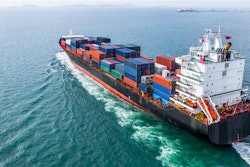
As we look back on 2021 and forward to 2022, we will build on several procurement industry themes that have prevailed in 2021 and others that will emerge further throughout the year. Here’s how the Top 5 trends -- visibility, velocity, agility, talent and value – impact the procurement space in 2022 and beyond.
Visibility
The first trend is the concept of visibility.
The challenge for procurement today is data. Modern tools and systems have given procurement teams unprecedented access to data and information, however data is often in disparate systems and is poorly classified and presented.
In 2022, procurement teams will continue to invest in capabilities to bring order and make sense of this data. The trend will be to continue to shift from broad-based enterprise procurement systems to flexible data fabrics that sit on top of legacy systems and newer best-of-breed investments to allow quicker extraction and analysis of data. For software providers, the capability needs to be delivered in weeks and months, not years, and should be scalable and most likely augment vs. replace existing systems.
Velocity
The second key theme for procurement leaders and their teams is to drive velocity by streamlining and improving business processes. Leaders need to be constantly asking, how can procurement simplify its operations so it can focus on generating more value? The goal of touchless procurement is becoming closer to reality particularly for lower value and risk indirect transactions.
Robotic process automation (RPA), advanced analytics, advanced sourcing optimization, artificial intelligence (AI) and advanced contract analytics will be the highest priority areas for investment for procurement. These technologies will be increasingly used to augment and replace existing human capabilities.
Across the business system, new capabilities will continue to be deployed such as warehousing automation, driverless vehicles, drone deliveries and automated stock-and-pick systems. These technologies will expand into all aspects of manufacturing and distribution. Procurement teams need to be comfortable with these new technologies, the shorter product life cycles and different contract terms and conditions. Data ownership, storage, protection and manipulation are now as important as securing physical assets.
Agility
The Coronavirus disease (COVID-19) pandemic has demonstrated the need for agility in every aspect of the business. Procurement has become and needs to remain front and center for the business. Procurement leadership needs to use technology and data visibility to drive key business decisions, risk management and deliver more value. In 2022, more and more procurement will shift from traditional data aggregation and visualization to creating real-time digital twins of the organization (DTO) to allow what-if scenario planning, spend modeling and cost management. These technologies and use will grow in adoption and capability.
In another emerging priority, environmental social governance (ESG) metric tracking and risk management extends up and down the value chain. In 2022 and across all industries, the expectation will again be that procurement is the lead integrating supplier information and bring technology solutions to advance as quickly as possible.
It is no longer acceptable to monitor only first tier vendors through clunky legacy solutions. Procurement leaders will have to invest in multi-tier management and collaboration systems. Procurement teams and vendors will adopt digital twins and collaboration tools to collect and manage ESG data. Procurement will be in the driving seat as businesses grapple with the challenges of cost management and the reduction of the environmental footprint for their business. And finally, blockchain will begin to emerge as a usable technology for procurement to assist in this endeavor.
Talent
In 2022, remote work and talent shortages will be here for the foreseeable future – outsourcing and hybrid work models will continue to grow for both the procurement talent and the broader business. Procurement must be ready to help the HR and business leadership identify the technologies and resources to fill these new modes of work.
Across the business, employees seek the gift of recognition, work purpose, personal and professional development, communication and belonging. Procurement leaders must model these behaviors and set the standard high. Retention and recognition of existing talent must remain a high priority for leaders in 2022 and by setting the benchmark in this aspect of managing talent they will bring further value to the business.
Non-traditional talents will be increasingly needed in addition to the traditional procurement skills. In 2022, there will be an increasing need for your team to be digital natives. Procurement staff need to build the communication skills and entrepreneurial thinking to transition beyond the transactional nature of procurement.
Value
Finally, it all rounds out in value. For every procurement leader, it is essential to demonstrate the value delivered. In 2022, continue to embed the shift from excel spreadsheets to real-time value tracking. The cost tracking capability of 2022 and beyond will be able to slice and dice by facility, product, region and spend category.
Conclusion
To conclude, in 2022 and beyond, procurement leadership role will be a key business partner and one CEOs and other executives will call when a new business need is emerging. Procurement leaders need to be prepared for the unexpected and agile enough to respond. Utilize the data and technologies available to proactively identify risk, opportunity and value.












